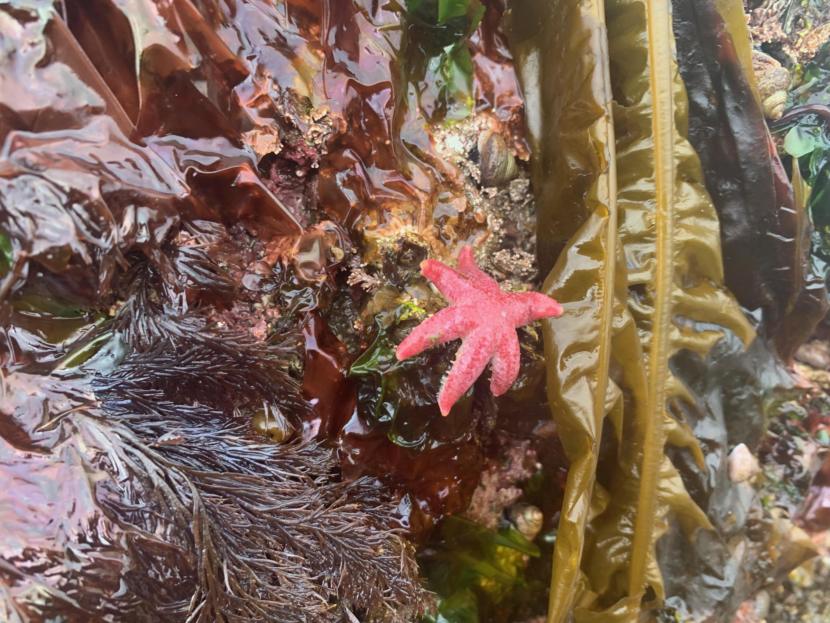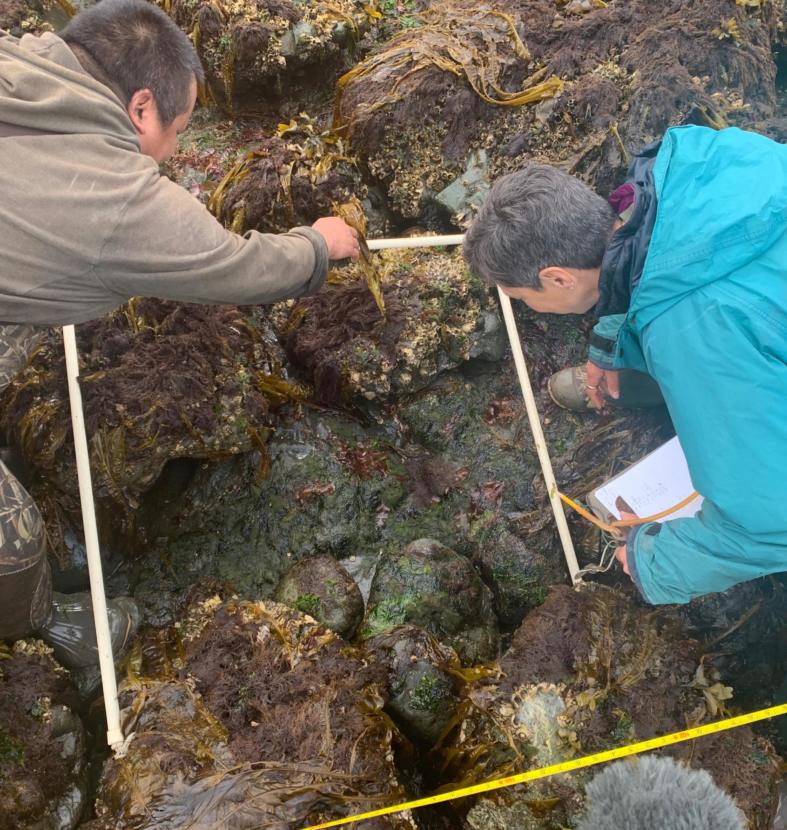
Along the West Coast, there are signs that sea stars are recovering from a wasting disease epidemic that began around 2013. Stars suffering from the disease literally melt away within 48 hours of the first sign of sickness.
Scientists once thought it was caused by a virus or another pathogen, but now they think it may actually be another sign of climate change.
University of Alaska Fairbanks ecologist Brenda Konar and her graduate students begin to survey a beach on a small island in Kachemak Bay. They’re here to count sea stars and other intertidal plants and animals.
It becomes clear very quickly there aren’t many stars here.
“Here you’d see — I don’t know what the common name of Asterias is,” Konar says as she begins to list the species that normally are found here.
One of her graduate students chimed in with the answer: “The modeled star.”
“You’d see Pycnopodia, you’d see some Solaster, the sun star,” Konar adds. “Kachemak Bay, these islands in particular where we would sample, would have a lot of the molded star. Prior to the disease, the numbers were really high.”
Prior to 2013, Konar would find 50 or more stars at this beach alone. However, she’s only found a handful at the five sites she’s surveyed in Kachemak Bay over the past few days, which is the new norm since wasting disease began to spread across the entire West Coast of North America back in 2013.
Over 20 species from Mexico to Alaska have been impacted by the disease in some way, according to Melissa Miner of the Mutli-Agency Rocky Intertidal Network.
But things are improving for some species in Washington, Oregon and northern California. Kachemak Bay is also seeing sunflower and ochre stars come back.
“If we go diving around here, we’re seeing a lot more stars, which is really exciting and we’re happy about that,” Konar says. “And if you go to the heads of the bays, there’s a lot of sea stars coming back in those areas.”

No one can really explain why stars are recovering in some areas and not others, but microbiologists like Ian Hewson think they’re getting closer to understanding what caused the die-off in the first place.
“Initially what we thought we had nailed it down to was basically a virus called the sea star-associated densovirus,” Hewson explained.
But Hewson and others now think that the presence of the virus in sea stars affected by wasting disease is just a side effect. He explained that the timing of wasting disease corresponds with runoff events in the ocean — think dying algal blooms, massive storms or other events that put a ton of organic matter into the ocean. That “dissolved organic matter” eventually covers sea stars and is broken down by bacteria.
“So bacteria utilized all the oxygen and basically deprives the starfish of that oxygen,” Hewson said.
Sea stars have a natural defense mechanism known as “programmed cell death,” which they can use to shed one of their arms, called rays, if it’s injured or developed an infection. But Hewson thinks sea stars are sending that signal to the entire body as they suffocate.

“So they’re basically expressing genes that cause all of the surface tissues to suddenly collapse, and then it melts away,” Hewson explained.
He said more research is needed, but if his theory proves true, he said large-scale die-offs like the one sea stars are recovering from could be a symptom of climate change.
Less oxygen in the water due to rising ocean temperatures, along with extreme storm and flood events putting more organic matter into the ocean, could be some of the factors.
“If our hypothesis is correct, that would actually cause wasting disease to get worse,” Hewson added.
Work like Hewson’s could also help scientists understand more about the timing of wasting events in their area. Still, those answers could be a ways off.
In the meantime, researchers like Konar are more focused on the recovery of local populations, which in Kachemak Bay isn’t going so bad.
“It’s great. I love it when people send me texts and go, ‘Look at the stars I just found.’ Because it’s, like, great. There’s hope. They’re going to come back,” Konar said.
She added that it’s just a matter of time before numbers in Kachemak Bay return to pre-disease levels.
